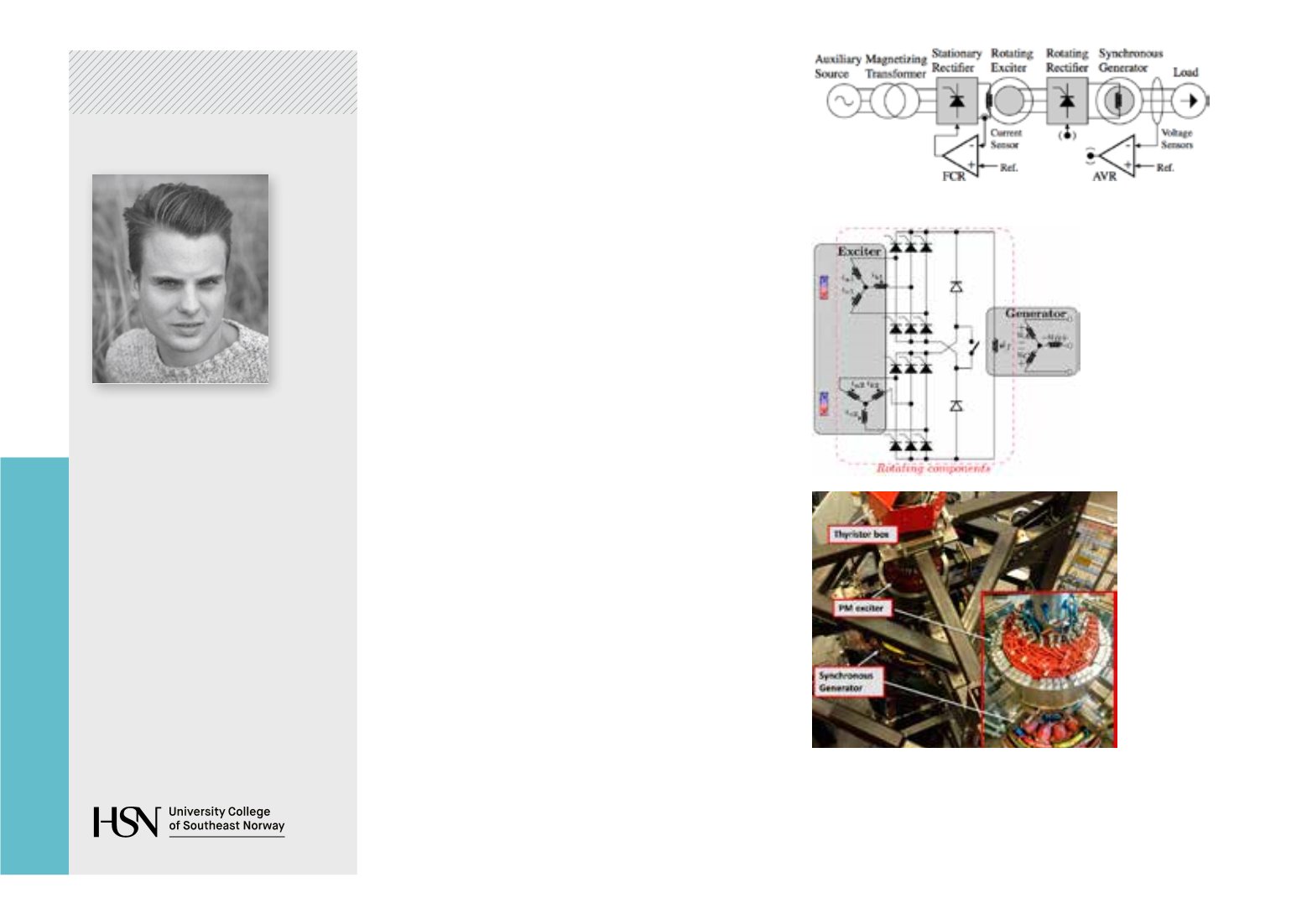

PHD THESIS
Department of
Microsystems
2014– 2018
Remote Controlled
Fast-Response
Brushless Rotating
Exciters for Improved
Performance of
Hydrogenerators
Supervisor:
Urban Lundin
Jonas Kristiansen Nøland
Background
The grid code, FIKS, from the Norwegian
Transmission System Operator (TSO), Statnett,
states that synchronous generators
≥
25 MVA,
must have a static excitation system. However,
an improved brushless excitation system is in
operation on some commercial power plants
(36MVA, 93.75rpm & 52 MVA, 167.67rpm)
with grid-assisting performance beyond the
conventional static system.
Preliminary outcomes of the project
•
A new era for large brushless hydro-generators
is expected. If remote control is not allowed, a
control signal through brushes should be employed
instead.
•
A six-phase exciter design with a hybrid-mode
thyristor interface leads to improved redundancy,
better controllability, minimized torque pulsations
and reduced armature currents for the exciter.
•
Proposed brushless system leads to reduced regular
maintenance due to lack of slip rings and reduced
unscheduled maintenance due to redundancy; both
causing a reduced cost-of-energy.
•
Permanent magnets on test rig is equivalent to
constant field current control (FCR) of exciter in the
commercial system.
•
Excitation boosting (EB) is included in the brushless
system without additional components or circuitry,
leading to improved FRT-capability and PSS-
actions.
State-of-the-art experimental test rig (Uppsala)
Schematics of commercial brushless system (Voith)
Proposed hydbrid-mode
thyristor based interface
Objectives of the future work
Extensive measurements and verification of the
system on large-scale power plants.
92
















